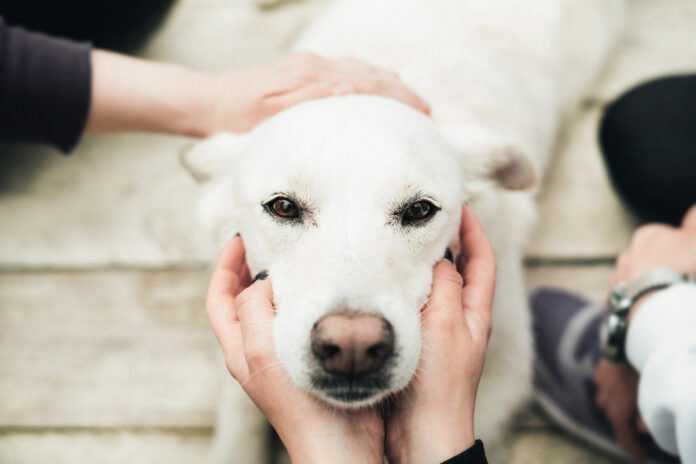3 Things to Do if a Dog or Cat Dies at Home

Not knowing what to do when you’ve discovered that your beloved pet has passed away can compound the grief of losing your furry friend. These simple steps will help guide you when an animal dies at home.
Losing a beloved animal companion is a heartbreaking experience. It leaves a void in your life that’s difficult to fill. But what happens if your furry friend dies at home from old age, an illness, an accident, or through planned in-home euthanasia? Most pet parents don’t know what to do after a fur baby passes away at home. These three steps will guide you during this tough time.
1. Cover the Body
Before doing anything else, gently cover or wrap your dog or cat with a blanket or sheet to keep away pests and animals. Place them somewhere away from extreme heat or sunlight. Heat can encourage odor and speed up the decomposition process. You’ll have approximately 24 to 48 hours before your pet begins to advance through the natural decomposition process.
2. Consider Your Aftercare Options: Cremation and Burial
Cremation: Aftercare is what you do with your dog or cat after they die. One of the most common options is cremation. Private/individual cremation is when your fur baby is cremated alone, so you can keep the ashes or scatter them. With group/communal cremation, your dog or cat will be cremated with other companion animals, so the crematorium will scatter the ashes for you.
Burial: The other option is burial. Some cities have pet cemeteries for this. In other municipalities, you might be able to bury them on your property. Check with your local city or county regulations and ordinances first. Many areas have laws prohibiting the burial of animals on private property.
If you’re allowed to bury your dog or cat at home, follow the local laws, especially if you opted for in-home euthanasia. Euthanasia medications are very toxic to other animals. You’ll have to take precautions to protect the environment, wildlife, and other companion animals. Contact your local animal control office or health department for guidance.
3. Arrange Transportation
You can transport your pet to your regular veterinary clinic, an emergency vet hospital, or directly to your local pet crematorium for cremation. These places typically offer private and group cremation.
If you are unable to transport your deceased pet yourself or don’t want to, reach out to your local veterinarian, SPCA or animal control, or pet crematorium and ask if they can arrange transportation.
In-Home Euthanasia Can Help with Every Step
When you choose in-home euthanasia, your veterinarian will be able to share options for aftercare. Some also offer deceased pet pick-up and transport as part of their end-of-life services. The cost of these services can vary depending on the size of your fur baby, your location, the type of cremation, and the length of time your pet has been deceased.




